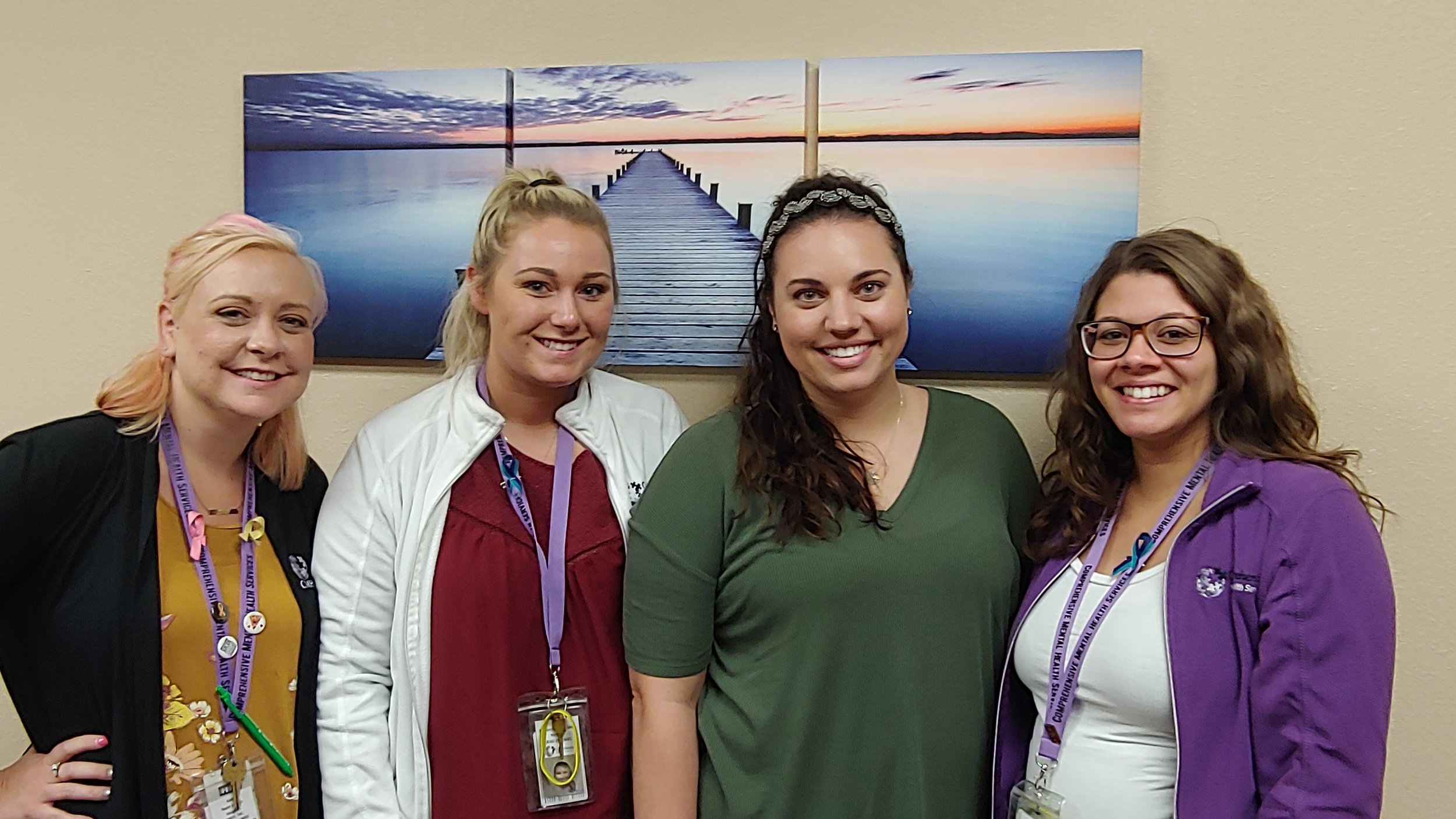Fort Osage team goes deep into schools to combat youth mental health crisis
Comprehensive Mental Health Services specialists, left to right, Katie Smith, Taylor Bradley, Hayley Chorice Tlamka and Jessica Garcia, are going into Fort Osage schools to help students.
Despair.
Self-hate.
Jessica Garcia saw alarming distress in too many of the Fort Osage students in her life skills group sessions.
A national youth mental health crisis was so close as to be staring her in the eyes.
The suicidal talk, said Garcia, a lead prevention specialist with Comprehensive Mental Health Services of Independence, “was way past prevention” practiced in her group sessions for anger management and self-esteem.
These children, Garcia said, “should be meeting with a therapist.”
The school district and the mental health agency took a step that many experts are saying needs to happen with urgency in communities throughout the country:
Fort Osage is putting therapists inside their schools.
“We’re aware of our students’ intensive needs,” said Maria Fleming, Fort Osage’s assistant superintendent for education services. “I hear it from our administrators, our teachers, our counselors, social workers — and from our parents and kids.”
The district was also aware that new changes in Missouri state policy a year ago would allow mental health providers to get Medicaid reimbursement for services provided inside schools, rather than just in clinics.
“We needed therapy for kids, but it had entailed pulling them out of school,” said Stacie Newberry, Comprehensive’s director of outpatient services.
Getting children mental health services has never been more urgent.
Missouri’s suicide rate among teens has risen from 10 to 13 per 100,000 since 2016 — higher than the national rate of 11.8, according the Centers for Disease Control.
Missouri KIDS COUNT reported this year that youth mental health hospitalizations in Jackson County have soared to a rate of 140.6 per 10,000 — a 54-percent increase in 10 years.
Nationwide, according to a 2019 report by Georgetown University’s Center for Children and Families, 20 percent of young people experience a mental, emotional or behavioral disorder each year, but less than one-third of them receive treatment.
Children with mental-health problems are three times more likely to miss school and 83 percent more likely to score below the mean in reading and math, Michael Lindsey of New York University reported at the Education Writers Association’s national conference in May.
For all those reasons and more, therapist Hayley Chorice Tlamka was dispatched into Fort Osage’s middle and high school during the past school year to do something about it.
It didn’t take long to see the benefits of meeting kids for therapy inside their school, she said.
“I’m coming into their space,” Tlamka said. “The students are a little bit more open and willing to share. Engagement is quicker. Interventions are a little quicker.”
Here’s how it works. The school’s social worker identifies a child of concern and the therapist talks to the child’s parents to be able to share the child’s school information and set up therapy sessions inside the school.
It takes the onus off parents who, when getting help at a community clinic, too often find themselves in an uncomfortable position where their child feels like “they’re dragging them in for therapy whether they like it or not,” Tlamka said.
The family doesn’t have to worry about transportation hardships. The school team can easily see if a child is struggling academically in certain classes and schedule sessions at times that don’t conflict with critical classes.
The Centers for Disease Control, in its 2014 report Whole School Whole Community Whole Child, said that school-based healthcare is “an untapped tool for raising academic achievement and improving learning.”
Tlamka worked with more than 15 students during the in-school program’s pilot year, and the school district and Comprehensive Mental Health Services will be adding another therapist to specialize in the elementary schools beginning in August.
“We are excited to expand it,” Fleming said. “We have issues at all grade levels. I’m hopeful we will be able to work with those kids and help with those families.”
The pressure on children is happening at younger ages, with increased intensity, said Comprehensive Mental Health therapist Taylor Bradley.
“Elementary kids are seeing social media and YouTube,” she said. “They’re so young. They have a lot of anger and they can’t dictate their emotions. They bully each other a lot.”
Schools need the mental health specialists, Fleming said. Fort Osage serves some 5,000 students. Its team of 16 counselors work at a ratio of about one for every 400 students, which is in line with the state’s standard.
The district’s four social workers serve a ratio of about one for every 1,400 students.
Social burdens fall more and more on schools, Newberry said. And children and their families too often still don’t feel like they can talk about personal concerns.
The work of mental health therapists in schools can also go “to dispel the stigma,” Newberry said. “People struggle and it’s OK to talk about it.”
Kids can see their fears shared by others.
And they can say, Newberry said, “We don’t need to be afraid.”
By Joe Robertson, LINC writer

